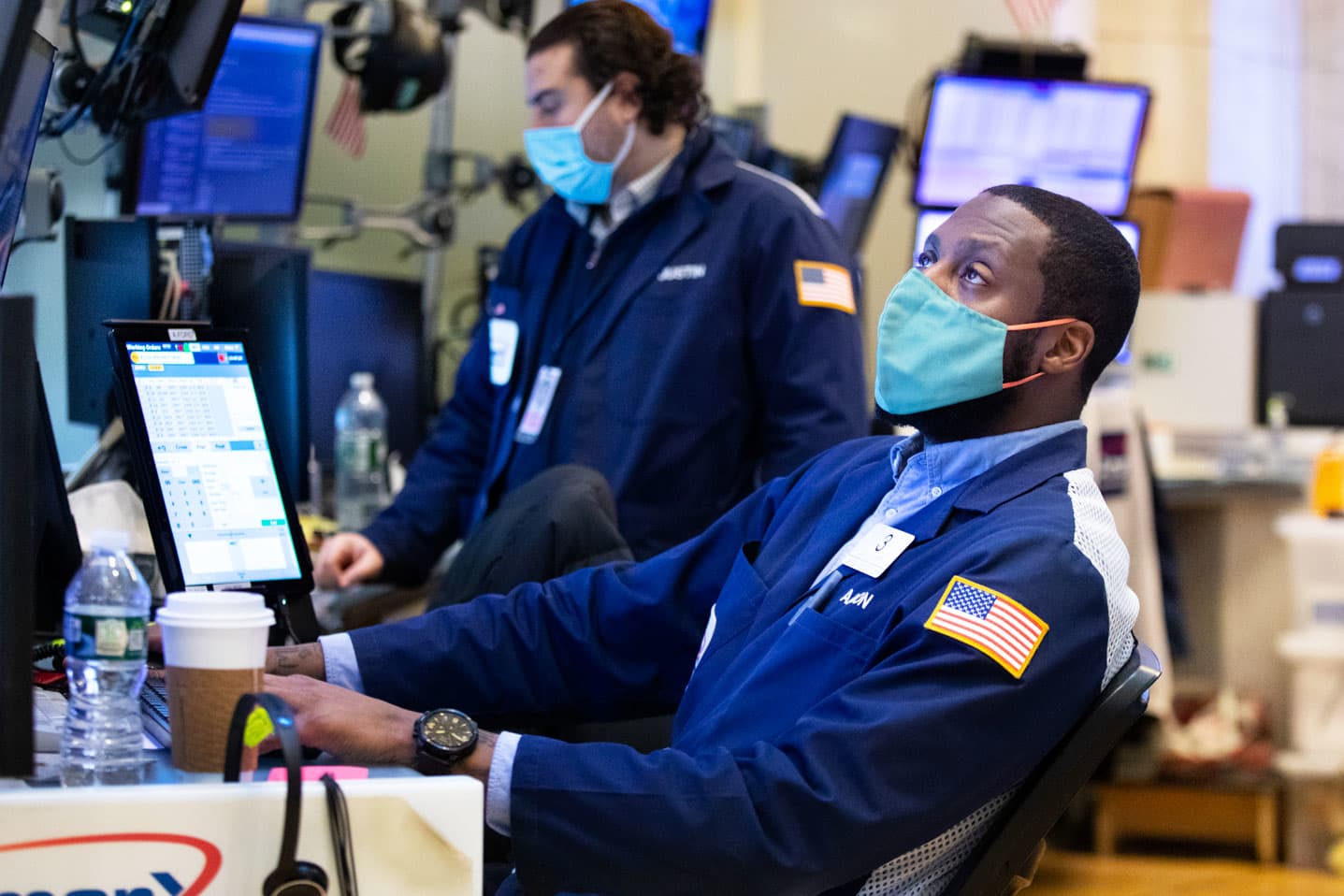Stock futures are mixed ahead of final January session; S&P heads for worst month since March 2020

Stock futures were mixed in early morning trading Monday as investors braced for the final trading day in what could be the worst month for the S&P 500 since March 2020.
Futures tied to the Dow Jones Industrial Average dipped 117 points, or 0.3%, and S&P 500 futures were down 0.1%. Nasdaq 100 futures rose 0.2%.
Loading chart…
January has turned out to be a dismal month for stocks. The S&P 500 is headed for its worst month since the pandemic-spurred market turmoil in March 2020 as investors worry about inflation, supply chain issues and the upcoming rate hikes from the Federal Reserve.
The 500-stock average is nearing correction territory, down more than 8% from its intraday high earlier this month. The S&P 500 is down 7% in January.
The Nasdaq Composite, which is roughly 15% off its November record close, is headed for its worst month since October 2008 and the worst first month of the year of all time. The technology-focused average is down nearly 12% in January.
The Dow, off by 4.4% this month, is heading for its worst month since October 2020 and the small-cap benchmark Russell 2000 is in a bear market.
The major averages experienced violent swings last week, with the Dow moving a gut-wrenching 1,000 points in both directions. The Dow ended the week 1.3% higher. The S&P 500 gained 0.8% last week and the Nasdaq was about flat for the week.
“This all kind of results in additional market volatility until investors digest this transition period,” said Michael Arone, chief investment strategist at State Street Global Advisors. “On the other side of this, the economy should continue to expand, earnings are pretty good. That’s enough to sustain markets, but I think they’re adjusting to the shift in monetary policy, fiscal policy and earnings.”
Investors have a big week for economic data and some important earnings reports from some of the market’s biggest tech names, including Alphabet, Starbucks, Meta Platforms, Amazon and more. About one-third of S&P 500 companies have reported fourth-quarter earnings and 77% have beaten Wall Street’s earnings expectations, according to FactSet.
“Mostly, this week will be all about whether the correction low is already in or whether last Monday’s intra-day low is again challenged and breached,” said Jim Paulsen, Leuthold Group chief investment strategist. “The longer the S&P stays above last Monday’s low or moves even further away on the upside, the more that calm will return and fundamentals may again start to dominate emotions in driving the market.”
Friday will see the December nonfarm payrolls report, which the White House warned Friday could be hit by the omicron surge at the end of 2021. Economists surveyed by Dow Jones expect the report to show a gain of just 178,000 with the unemployment rate holding steady at 3.9%.
There also will be several Federal Reserve speakers Monday, including Richmond Fed President Thomas Barkin, who will appear on CNBC around 3 p.m. ET.
Last week, the Fed indicated that it is likely to raise interest rates for the first time in more than three years in order to combat historically high inflation. Markets are now pricing in five quarter-percentage-point interest rate hikes in 2022.
—CNBC’s Patti Domm contributed to this report.




